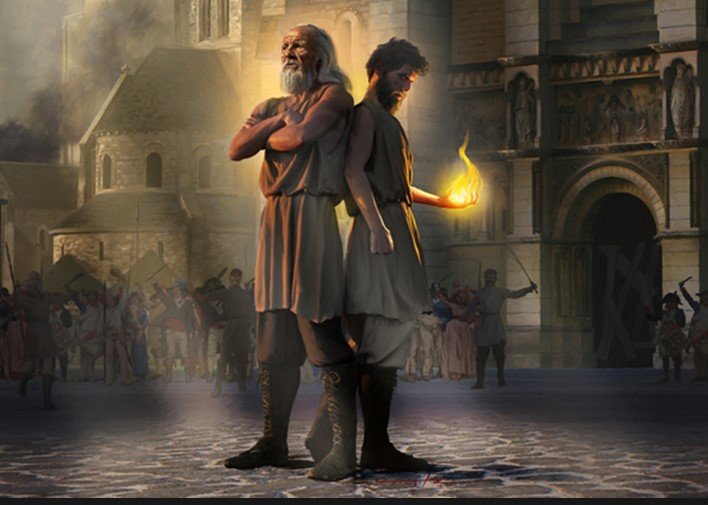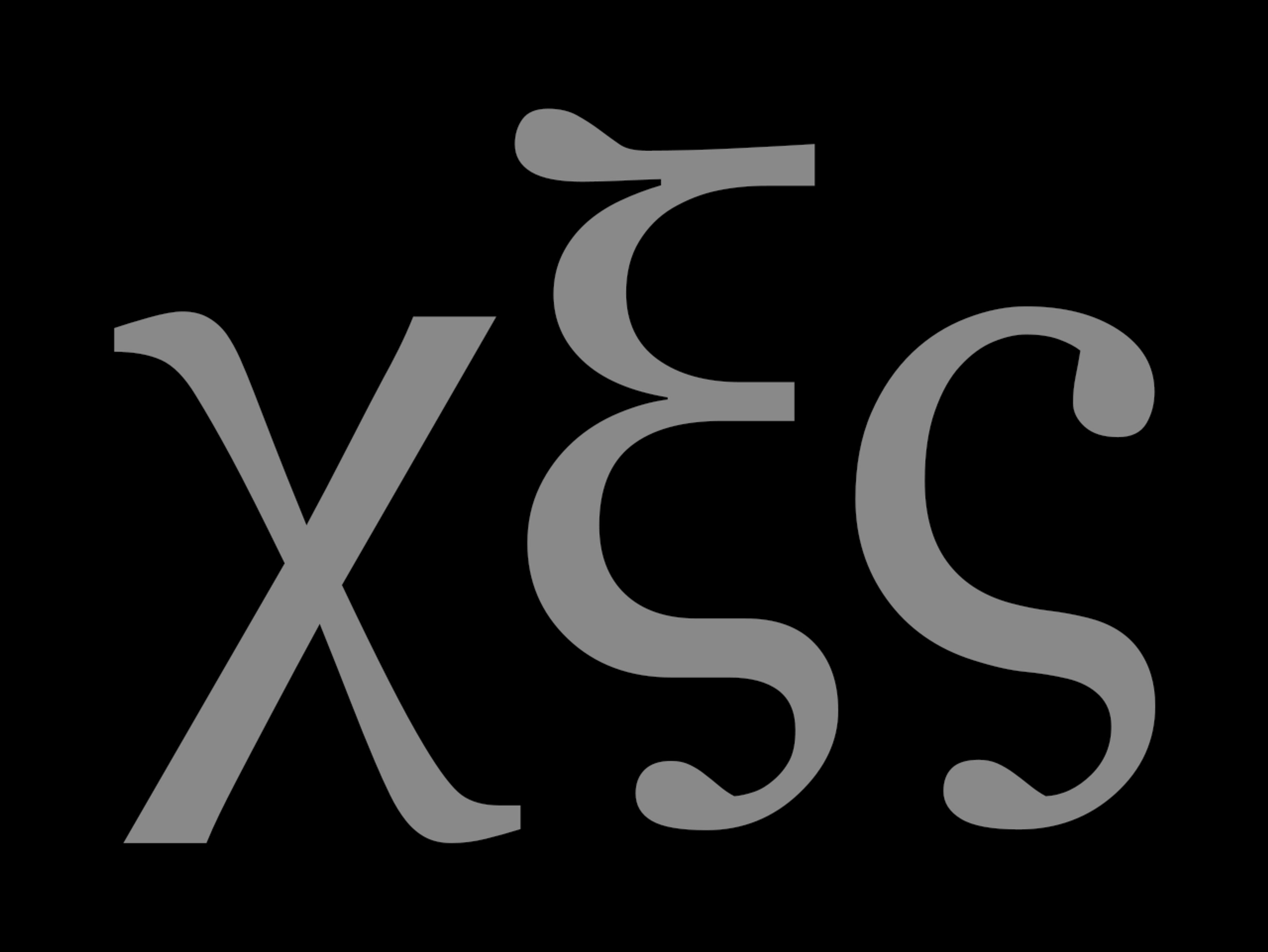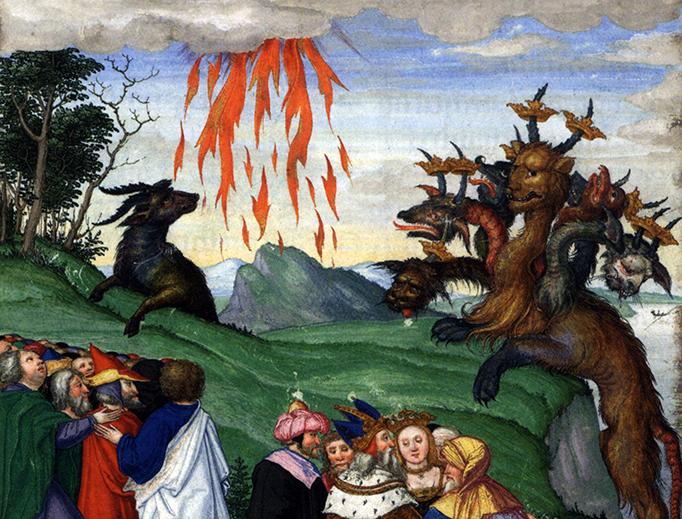Who Are the Two Witnesses?
Revelation 11 gives the clearest biblical account of the two witnesses. Because this text is dense and symbolic, scholars and pastors have offered several competing identifications and interpretations. Below I walk through the biblical data, the main interpretive options, supporting arguments for each, weaknesses to watch, a best-fit reading, and practical application for believers.
Key biblical facts to anchor the study
Read Revelation 11:1–14 (KJV) alongside these cross texts for background and comparison.
Important details from Revelation 11:
-
There are two witnesses who prophesy for 1,260 days, clothed in sackcloth. (Rev 11:3)
-
They have authority to shut heaven, turn waters to blood, and smite the earth with plagues, as often as they will. (Rev 11:6)
-
Their ministry provokes the beast to make war on them and to kill them, and their corpses lie in the street of the great city for three and a half days. (Rev 11:7–9)
-
After three and a half days God raises them, they ascend to heaven in a cloud, and their enemies see them. A great earthquake follows. (Rev 11:11–13)
-
John hears a loud voice of great praise and sees the two olive trees and two candlesticks which stand before the Lord of the earth. (Rev 11:4, cf. Zech 4:2–3, 11–14)
Cross references and themes:
-
Moses-like signs (water to blood, plagues) recall Exodus and prophetic authority.
-
Elijah-like signs (shutting heaven, calling down fire) recall 1 Kings 17–18 and James 5:17.
-
Zechariah 4:1–14 images of two olive trees and two lamps supplying oil to a lampstand.
-
The 1,260 days, 42 months, and three and a half days are recurrent apocalyptic time patterns in Daniel and Revelation, often read as symbolic of a limited period of prophetic witness under persecution.
Main interpretive options, with evidence and critiques
1) Literal future, individual prophets sent to Israel in the end times
Argument for
-
Revelation 11 reads as a narrative of two persons who act and suffer in history, with bodily death, lying exposed, resurrection, and ascension.
-
The miracles are concrete and match Moses and Elijah motifs.
-
The “great city” where they lie is “spiritually called Sodom and Egypt” which many associate with Jerusalem in its end-time rejection of God, suggesting a Jewish-focused witness prior to final judgment.
-
Zechariah 4 imagery seems to be applied directly in Revelation 11:4, implying actual end-time prophetic ministers like the two anointed ones in Zechariah.
Difficulties
-
If literal, who exactly are they? Elijah and Moses cannot both literally return as the same historical persons unless one allows resurrection, transfiguration-type returns, or symbolic naming.
-
Some expect Elijah to return (Malachi 4:5), but Moses is not promised to return in the same way. Some propose Enoch rather than Moses.
2) Moses and Elijah as types rather than literal identities
Argument for
-
John’s Gospel, at the transfiguration, shows Moses and Elijah together with Christ as representative figures of the Law and the Prophets. The two witnesses could be two persons who fulfill the roles or ministries of Moses and Elijah.
-
The miracles match the typological ministries: Moses for plagues and signs over water, Elijah for shutting heaven and calling down fire.
-
The phrase “they are the two olive trees” fits Zechariah’s two anointed ones who supply God’s power, not necessarily the literal historical men.
Difficulties
-
Typological readings can leave open who the actual persons are, and critics say this weakens predictive specificity.
3) Enoch and Elijah returned
Argument for
-
Scripture records that Elijah was taken up without dying (2 Kings 2:11) and that Enoch “was translated” (Genesis 5:24; Heb 11:5), so both could return without suffering a normal death, fulfilling end-time witness roles and suffering martyrdom in the narrative.
-
Early Jewish and Christian traditions sometimes linked Enoch’s apocalyptic role to end-time prophecy.
Difficulties
-
No explicit biblical text identifies Enoch and Elijah as the two witnesses, so this is speculative.
-
Revelation’s description of death and lying in the street suggests they will die, which fits a return and martyrdom, but requires accepting that both Enoch and Elijah can be killed after prior translation.
4) Symbolic reading: the two witnesses are corporate symbols (Israel and the church, or the law and the prophets)
Argument for
-
Revelation is highly symbolic; the number two and paired imagery could indicate corporate testimony rather than two personal prophets.
-
“Two witnesses” in the Old Testament law establish legal sufficiency (Deut 19:15, Matt 18:16). Some read Revelation’s two witnesses as God’s faithful testimony in the world in the face of opposition.
-
The miraculous signs could symbolize the authority of God’s word to judge and purify rather than literal miracles.
Difficulties
-
Revelation 11 reads much like a historical episode with bodily death and resurrection, which is harder to reconcile with a purely symbolic or corporate reading.
-
The text’s vivid physical details push many readers toward some literal component.
5) Historicist or past-fulfillment views
Argument for
-
Some historicists find the two witnesses in past figures or eras, such as Protestant reformers or two churches. They read the 1,260 days as symbolic of centuries.
Difficulties -
This requires complex historic mapping and is often contested heavily by other schools.
Weighing the evidence: a best-fit, balanced reading
A careful reading of the text combined with biblical typology suggests this synthesis is persuasive and pastoral:
-
Revelation 11 narrates a real, historical end-time witness to occur prior to the final judgment. The narrative tone, bodily death, public exposure, resurrection, and ascension point to actual persons rather than only metaphors.
-
These two persons will embody the ministries and power patterns of Moses and Elijah, either by name or in typological function. The Zechariah 4 image supports the idea of two anointed bearers of God’s power who stand “before the Lord of the earth.”
-
Whether the two are literally the historical Moses and Elijah, or two new prophets who function in those roles, theologically the point is the same: God will send a forceful, supernatural testimony that will both warn and judge, and it will provoke violent opposition that culminates in their martyrdom and dramatic vindication.
-
The 1,260 day timeline and the three and a half day death motif align Revelation with Danielic apocalyptic timing, showing God’s purposes unfold in a limited, determined period under intense pressure.
This reading honors the plain sense of Revelation while acknowledging the recurrent biblical pattern of typology.
Theological and pastoral significance
-
God gives final, undeniable testimony before the world’s final judgment. These witnesses are the last call to repentance and the final demonstration of God’s sovereignty.
-
Persecution will accompany faithful witness. The witnesses are martyred, showing that witness often entails suffering.
-
Vindication is certain. God raises them and brings judgment, showing that apparent defeat is never the final word.
-
The witness model matters practically. Whether the two are individuals or types, their boldness, dependence on God, supernatural authority, and readiness to suffer offer a pattern for faithful ministry.
Practical applications for believers today
-
Emulate their boldness, not presuming supernatural signs, but trusting God and speaking truth even under opposition.
-
Expect trials when faithfully testifying to Christ, but hold fast to the promise of vindication.
-
Pray for clarity and protection for faithful witnesses, and pray for national and global repentance when the gospel is preached.
-
Study the Scripture patterns of Moses and Elijah to learn how God equips and vindicates his messengers.
Further study recommendations
-
Read Revelation 11 in full, then compare Zechariah 4, Daniel 7 and 12, 2 Thessalonians 2, and the Elijah accounts in 1 Kings 17–19.
-
Consult reputable commentaries from across traditions to see the range of historical and contemporary interpretations. Balance literal, symbolic, and theological insights rather than relying on a single approach.
The two witnesses are a central, dramatic feature of Revelation’s end-time drama. The text most naturally describes two real, end-time prophetic witnesses, empowered by God, who act with Moses- and Elijah-like authority, who are killed and then gloriously raised, and whose ministry provokes great reaction in the world. Whether they are literally Moses and Elijah returned, or two prophets who fulfill their types, the point is the same: God will send a decisive, supernatural testimony to the earth before the final consummation, and believers are called to courageous, faithful witness now while trusting God for ultimate vindication.






No comments yet. Be the first to share your thoughts!